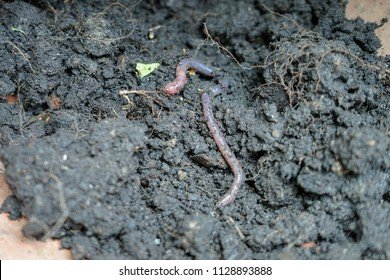
If you’re grappling with poor soil, this method of using earthworms for soil rehabilitation is not just effective; it’s also a natural way to restore balance. So grab a cup of coffee, and let’s dig into how these unsung heroes of the soil can help turn your desolate space into a thriving ecosystem.
Understanding the Role of Earthworms in Soil Health
Earthworms are nature’s recyclers. They consume decaying organic matter, turning it into rich, nutrient-filled compost that plants thrive on. When worms eat through the soil, they create tunnels, improving drainage and aeration. This means water can seep deeper into the ground, reaching plant roots more efficiently. Plus, those little worm tunnels provide habitats for other vital soil organisms, which all contribute to a healthy ecosystem.
You might be wondering how earthworms actually refresh depleted soils. Through their feeding, they create a **natural fertilizer** full of nutrients like nitrogen, phosphorus, and potassium. This organic matter not only nourishes plants but also enhances the soil structure, allowing for better root growth. In simple terms, earthworms help create a happy home for plants!
How to Get Started with Earthworm Rehabilitation
So, ready to bring in the earthworms? Here’s the deal: you’ll want to start with a few steps to make sure you’re doing it right. First off, you can either collect earthworms from your garden or purchase them from a local supplier. If you choose the second option, red wigglers (Eisenia fetida) are a popular choice because they thrive well in compost.
Next, prepare your soil. It’s essential to loosen compacted earth. You can do this by turning the soil over with a shovel or tiller. Add some organic matter like kitchen scraps or dried leaves to encourage worms to move in. Think of it as setting a welcoming dinner table for them!
Creating the Perfect Habitat for Earthworms
Earthworms have specific Needs. They thrive in a damp, dark environment free of harsh chemicals. Here’s how to create a worm-friendly space:
- Moisture: Keep the soil damp, but not soggy. Too much water can drown them.
- Temperature: Earthworms like it cool—ideally between 55°F to 77°F. Extreme heat or cold can be harmful.
- Organic Material: Add a layer of compost, leaves, or grass clippings. This is their food and habitat.
You might be surprised by how quickly these little guys take to their new environment. Within weeks, you’ll notice enhanced soil structure and healthier plants. It’s like watching a garden bloom with joy!
Benefits of Using Earthworms for Soil Rehabilitation
When you use earthworms to rejuvenate depleted soils, you’re not just fixing your garden; you’re embracing a holistic approach to gardening. Here are some standout benefits:
1. **Natural Fertilization:** Earthworm castings are rich in nutrients, providing a slow-release fertilizer that plants love.
2. **Improved Soil Structure:** The tunnels created by earthworms enhance soil aeration and drainage, which is crucial for plant roots.
3. **Enhanced Microbial Activity:** A thriving worm population means a healthy ecosystem, fostering beneficial microbes that further enrich the soil.
4. **Sustainable Practice:** This method is eco-friendly, reducing the need for chemical fertilizers and pesticides that can harm the environment.
This strategy doesn’t just help your immediate garden; it promotes biodiversity, ensuring a thriving ecosystem in the long run.
Common Problems and How to Overcome Them
While using earthworms to rehabilitate your soil is generally straightforward, there may be hiccups along the way. Here are some common issues and how to tackle them:
– **Overwatering:** If you notice earthworms escaping, they may be drowning. Make sure the soil is damp but not soaked.
– **Chemical Exposure:** Earthworms are sensitive to chemicals. If you’ve recently treated your garden with pesticides or herbicides, you may need to wait before introducing worms.
– **Temperature Extremes:** If your garden is experiencing extreme heat or cold, consider temporarily relocating your worms to a more stable environment.
Don’t get discouraged if things don’t go perfectly! Gardening is about trial and error, and learning from these challenges will help you grow even more.
Alternative Methods for Soil Rehabilitation
While earthworms are fantastic allies, there are other methods you might consider for rehabilitating soil. Some alternatives include:
– **Cover Crops:** Planting crops like clover or rye can help restore nutrients and prevent soil erosion.
– **Composting:** Creating a compost pile can enrich the soil organically, similar to what earthworms do.
– **Mulching:** Adding organic mulch helps retain moisture and improve soil structure over time.
Combining these methods with earthworms can amplify your results, leading to a truly vibrant garden. Think of it as creating a mixed toolbox for your soil rehabilitation journey.
Final Thoughts on Earthworm Soil Rehabilitation
Using earthworms to rehabilitate depleted soils is like inviting nature’s little helpers into your garden. They transform your soil, making it healthier and more hospitable for plants. Not only do you get to enjoy a more vibrant garden, but you also contribute to a sustainable practice that benefits the environment.
Remember, patience is key. It might take time to see the full effects of your earthworm friends, but believe me, the wait will be worth it. So roll up your sleeves, get your hands dirty, and let these amazing creatures work their magic! Your plants will thank you, and soon, your garden will be buzzing with life again.
